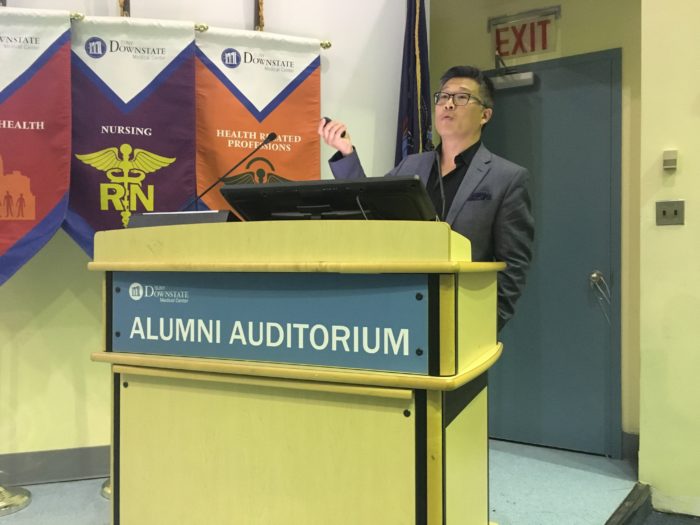State of HIV in Brooklyn: Summer 2017
August 17, 2017 4:56 pm
People who are HIV positive today have good odds for a long, healthy life.
“HIV may not be seen as scary a condition as before, and people may not be as worried about it,” said Dr. Benjamin Tsoi, in an update on the state of HIV in Brooklyn this summer at SUNY Downstate. “At the same time, if they’re not worried, people may not take the precautions and protect themselves.”
This may be especially true for people born after the AIDS crisis of the 1980s, said Dr. Tsoi, acting director of HIV Prevention for the New York City Department of Health and Mental Hygiene. Half of new HIV infections, reported in 2013, were young men under 30. In New York City, new diagnoses reported in 2015 were 36% Latino and 42% black.
More: CDC: HIV among youth
“The message still isn’t getting through to all communities,” said Dr. Wayne Riley, SUNY Downstate president. “This is something that requires all of our attention, and something I’ve encountered personally as a physician.”
The risk of HIV infection for an American is 1 in 99. In New York State, the odds are 1 in 69.
The risk, nationwide, for heterosexuals is a 1 in 443 chance of HIV infection. Black and Latina women have a 1 in 48 chance of infection, however. And for men who have sex with men, the risk is 1 in 6. For black and Latino men who have sex with men, the risk is 1 in 2, or 1 in 4, respectively.
“These numbers are totally unacceptable for a first world country,” Dr. Tsoi said. “If you’re a black gay man in New York City, your risk of infection is very high. What can we do to empower men to take action and protect themselves?”
More: New York City HIV statistics for 2015 (AIDSVu)
Access to healthcare, economic status and neighborhood also influence infection rate. The strategy to fight HIV/AIDS in New York is to get people tested, and linked to treatment and prevention services, Dr. Tsoi said, including pre-exposure prophylaxis (PrEP), a daily pill that can prevent HIV.
New York City was the site of one of the first documented AIDS cases in the early 1980s, with the epidemic peaking here around 1993 with an estimated 14,000 AIDS-related deaths. City health officials, the STAR Program at SUNY Downstate, and other public health groups are working to end it completely in New York with outreach, education and prevention.
More: CDC: HIV statistics
For more information on PrEP and PEP, contact the STAR Program at 718-270-3745.
Tags: Brooklyn, HIV, NYC, public healthCategorised in: Uncategorized
This post was written by suny-admin

Comments are closed here.